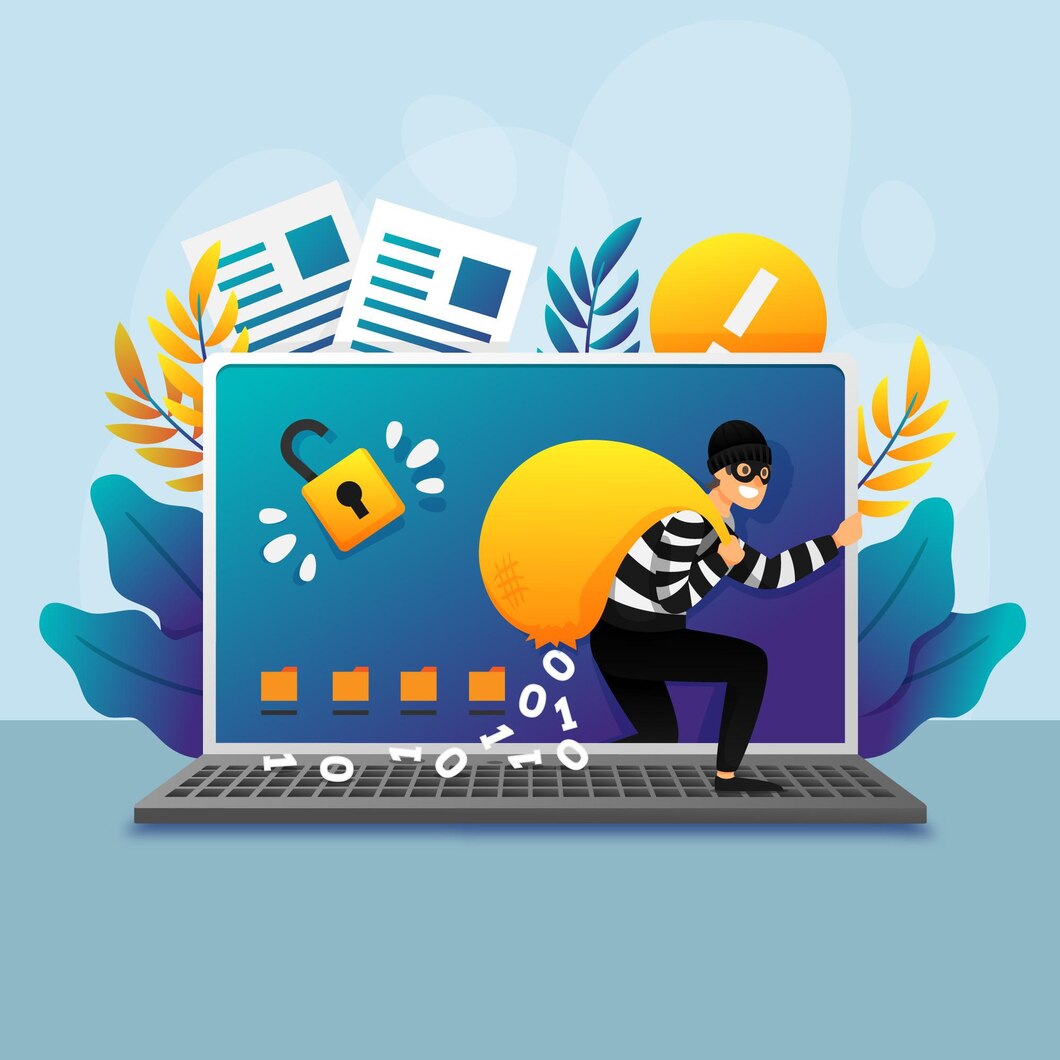Phishing involves criminals impersonating reputable entities to steal confidential information. It is accomplished through deceptive emails, messages, or websites designed to look genuine.
The concept of phishing is essential for anyone using the Internet, as it poses a significant threat to online security. Users must remain aware and cautious, as cybercriminals use advanced methods to imitate reliable sources.
Recognizing and preventing phishing attacks is crucial, as they can result in severe outcomes like financial loss and identity theft. Since phishing constantly evolves, staying updated on the latest tactics can help maintain a strong defense against potential threats.
Common Phishing Techniques
Attackers use several standard phishing techniques to deceive their victims. Understanding these techniques can help you spot potential phishing attempts early and avoid falling victim.
- Email Phishing: Attackers deceive recipients by sending emails that seem to be from trustworthy sources. These emails frequently have links to fraudulent websites or harmful attachments. Always double-check the sender’s email address and avoid unexpected attachments or links.
- Spear Phishing is targeted attacks customized for specific individuals or organizations. These attacks are often more convincing because they use personal information to create a sense of trust. Verifying unexpected requests for sensitive information is essential, even if they appear to come from known contacts.
- Clone Phishing: This involves duplicating a legitimate message that was previously sent and altering the links to point to malicious websites. The attacker then sends this “cloned” message to the original recipients, hoping they won’t notice the changes.
- Whaling: Aimed at high-profile individuals such as executives, these attacks often involve elaborate schemes to trick victims into divulging sensitive information. Because they target key personnel, the consequences of a successful whaling attack can be particularly damaging.
How to Identify Phishing Attempts?
Recognizing phishing attempts is crucial for safeguarding your personal information. Here are some key indicators to watch out for:
- Suspicious Sender Addresses: Double-check email addresses for slight deviations or misspellings. Even a single-character difference can indicate a fraudulent source.
- Urgent or Threatening Language: Phishing attacks frequently induce a feeling of haste to spur immediate responses. Be cautious of emails that pressure you to act immediately, especially if they involve sensitive information.
- Unfamiliar Links: Hover over links to view the actual URL before clicking. If the URL appears questionable or doesn’t align with the intended destination, it is recommended that you refrain from clicking on it.
- Impersonal Greetings: Generic salutations like “Dear User” can be a red flag. Legitimate companies usually address you by name.
Knowing these signs, you can often detect phishing attempts before they cause harm. When in doubt, it’s always best to verify the authenticity of the communication through alternative channels, such as directly contacting the alleged sender.
Best Practices to Avoid Phishing
Implementing best practices can substantially reduce the risk of falling for phishing scams:
- Use Multi-Factor Authentication (MFA): Adding an extra layer of security can protect against unauthorized access. Even if attackers obtain your password, they need a second verification form to access your accounts.
- Regularly Update Software: Keep your operating system, browser, and security software current. Updates frequently contain security fixes that target weaknesses to prevent attackers from exploiting them.
- Educate Yourself and Your Team: Training on phishing tactics and preventive measures is essential. Consistently update training resources to stay current with the latest phishing techniques and guarantee that all individuals are adept at spotting and reacting to phishing attacks.
- Verify Before Providing Information: Confirm the legitimacy of requests for sensitive information. If you receive an unexpected request, contact the requester through a known, trusted method to verify its authenticity.
Tools and Resources to Enhance Security
Utilize available tools and resources to bolster your defenses:
- FTC’s Guide on Avoiding Phishing Scams: Offers comprehensive advice on recognizing and avoiding phishing.
- CISA’s Cybersecurity Tips: Provides practical tips and solutions to enhance online security.
These resources provide helpful tips and guidance to help you outsmart cyber attackers. Consistently consulting and implementing advice from these reliable sources can improve your security stance and lower the chances of being targeted by phishing attacks.
Read also: Business Beyond Borders: Top Jurisdictions for Offshore Incorporation in 2024
Real-Life Examples of Phishing Scams
Real-life phishing scams shed light on the various tactics used by cybercriminals. For example, a significant uptick in phishing attacks was observed during the COVID-19 pandemic. Scammers preyed on people’s anxiety, sending out fake emails regarding stimulus checks and vaccines to steal personal information.
These scams often leveraged fear and uncertainty, making them particularly compelling. For instance, fake emails purportedly from government agencies instructed recipients to provide personal information to receive financial aid. Those who complied found themselves victims of identity theft and financial fraud.
Another example is the “Google Docs” phishing scam, in which attackers send seemingly legitimate invitations to collaborate on a Google Document. Unsuspecting users who click the link are led to a malicious site that captures their login credentials. Understanding these real-life examples can help you recognize similar tactics and stay vigilant against evolving phishing schemes.
Action Steps If You Fall Victim
If you suspect you’ve fallen victim to a phishing attack, take these immediate steps:
- Change Passwords Immediately, especially for compromised accounts. Choose firm, unique passwords for each account to minimize the risk of further compromise.
- Alert Your Bank: Notify your financial institution to monitor or freeze your accounts if necessary. They can assist you in implementing further measures to safeguard your financial assets.
- Report the Incident: Inform your IT department and report phishing to relevant authorities. It could prevent others from falling for the same scam and track down the perpetrators.
- Monitor for Identity Theft: Monitor your credit report and bank statements for suspicious activities. Early detection of fraudulent activities can mitigate potential damage and facilitate quicker resolution.
Quick action can limit the damage and help secure your personal information. Never let your guard down, and be proactive in safeguarding yourself and your data.

